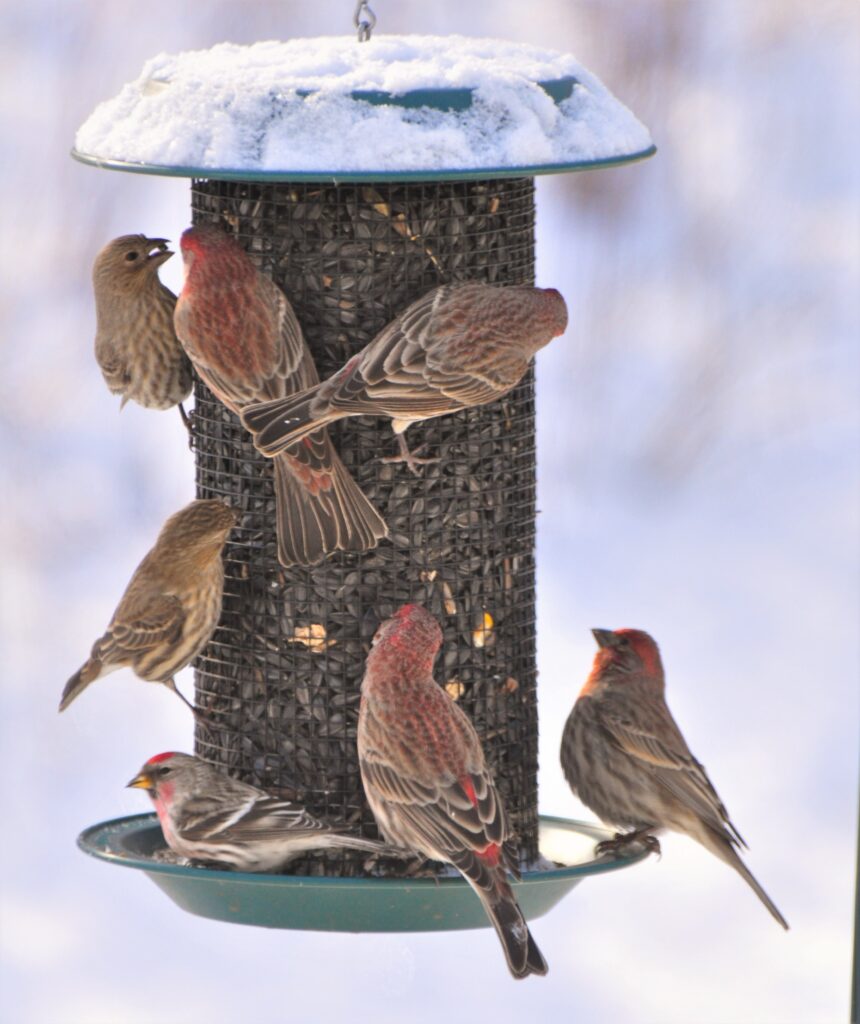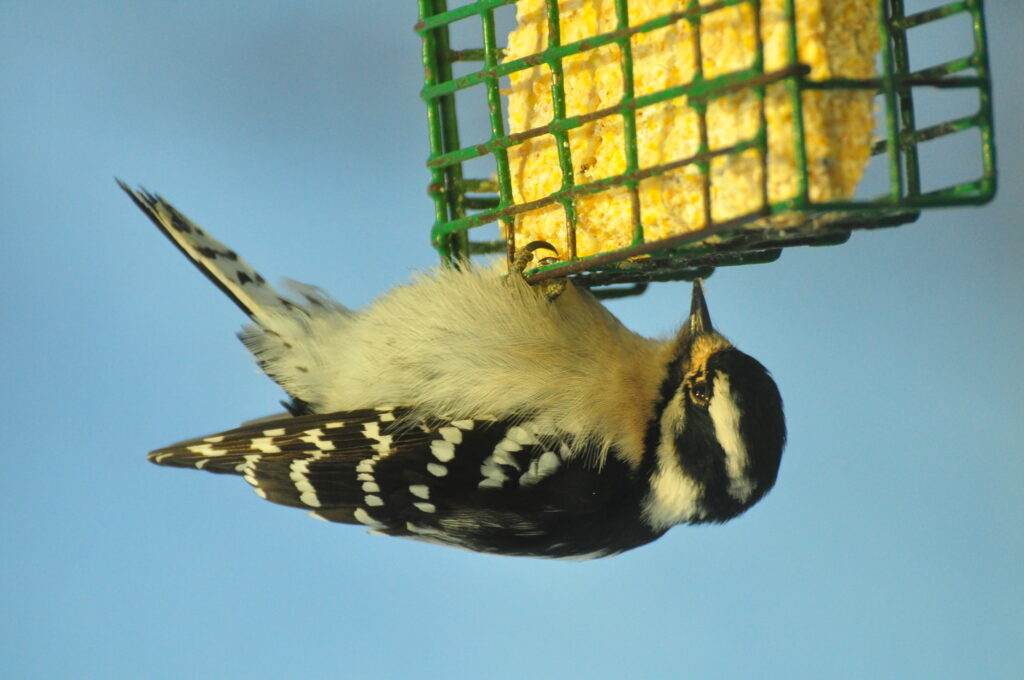Photography courtesy of Lowell Washburn, all rights reserved.
Winter bird feeding has become one of Iowa’s most popular cold weather pastimes. Strategically placed feeders provide we humans with fascinating, through-the-window entertainment while, at the same time, saving foraging winter birdlife valuable time and energy. During periods of extreme weather, bird feeders have the potential to increase wildlife survival. Simply put, bird feeders are good for us, and they are good for the birds.

Winter bird feeding can be as simple or as complex as an individual cares to make it. Sunflower seeds and cracked corn are basic, high-energy foods that are eagerly utilized by most backyard species. Although both grains can be used in hanging feeders, some birds prefer to feed on the ground. Offering food at both levels will attract the optimum variety of cold weather birdlife. Targeting individual species will also increase variety. Niger seed, for example, will attract the greatest number of finches. Suet cakes or peanut butter will increase the number of nuthatches, jays and woodpeckers you’ll observe.

Providing ice free drinking water is also one of the most important – and most overlooked — aspects of winter feeding. Most birds can survive by utilizing snow for water, of course, but converting snow to water burns excessive amounts of precious calories. Electric pan heaters are the most convenient option for providing open water. If you don’t have one of these, you can place a pan of warm tap water near feeders. Shallow pans made of black rubber work better than plastic or metal. During most winter days, the open water will last for at least an hour or so before it starts to skim over.
Winter bird feeding is a pastime enjoyed by millions of Americans. Backyard bird feeding provides instant rewards. It’s something that makes us feel good and makes the birds feel even better.


 Susan Judkins Josten
Susan Judkins Josten Rudi Roeslein
Rudi Roeslein Elyssa McFarland
Elyssa McFarland Mark Langgin
Mark Langgin Adam Janke
Adam Janke Joe Henry
Joe Henry Sue Wilkinson
Sue Wilkinson Tom Cope
Tom Cope Kristin Ashenbrenner
Kristin Ashenbrenner Joe Wilkinson
Joe Wilkinson Dr. Tammy Mildenstein
Dr. Tammy Mildenstein Sean McMahon
Sean McMahon